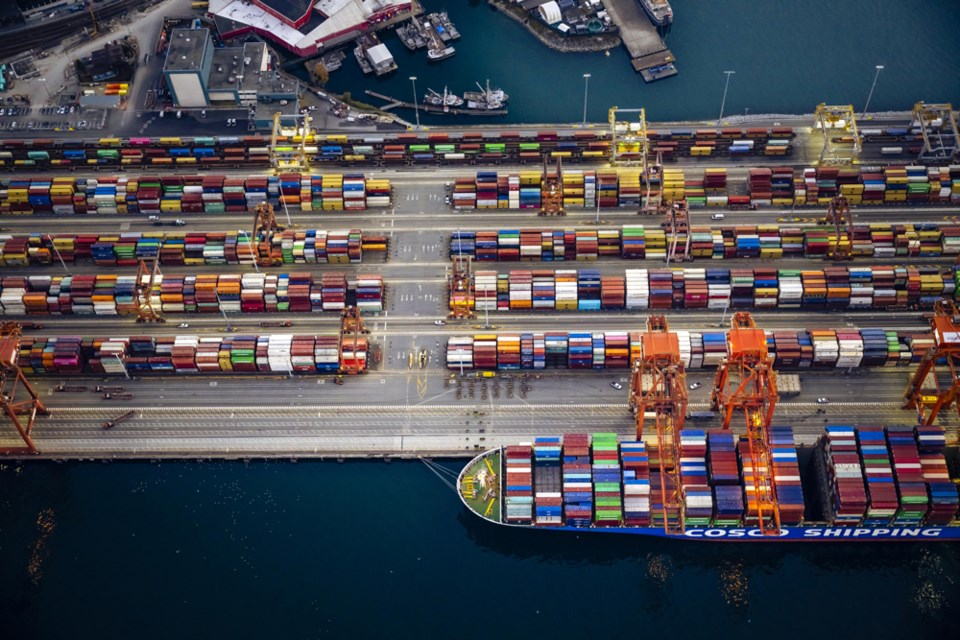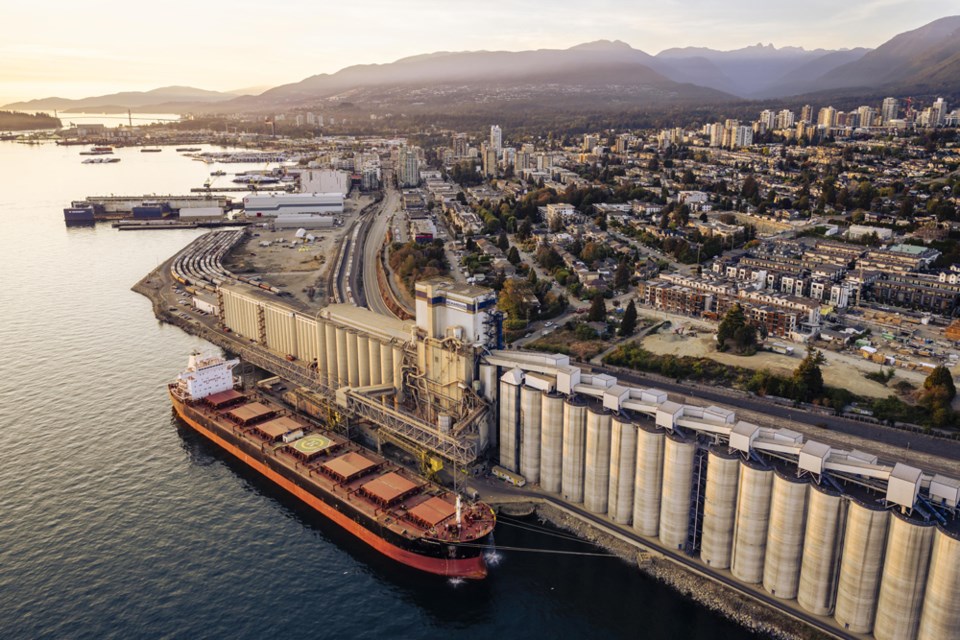Approximately $22 billion of Saskatchewan’s trade flows through the Port of Vancouver each year, including exports of food and fertilizer that the world relies on, and imports of consumer items, medicine and farming equipment.
It is a journey across tens of thousands of kilometres and the Port of Vancouver is a key link in the chain—connecting the Prairie province with up to 170 trading partners across the ocean and across the globe.
The Vancouver Fraser Port Authority, the federal agency with a public interest mandate to facilitate Canada’s trade through the Port of Vancouver, recognizes its importance to all of Western Canada, as well as Western Canada’s importance to enabling Canada’s trade objectives.
That’s why the port authority is focused on ensuring the port and its supply chains remain efficient and reliable by investing in the physical and digital infrastructure, and relationships needed to move goods today—and tomorrow.

“We know we have a substantial responsibility to support the needs of Saskatchewan businesses, farmers and families—ensuring they can move important products to international markets and also access the everyday goods they need to thrive,” says Peter Xotta, the port authority’s president and CEO. “We take this responsibility to heart, and work closely with the port community, our customers and stakeholders to build the trade capacity and resiliency needed to ensure our trading nation can prosper today and into the future.”
Grain has long been a core sector connecting the Prairies and the port, and today there are nine terminals handling grain at the Port of Vancouver. The importance of the capacity these terminals provide was evident in the first half of 2023, following a huge rebound in Prairie grain volumes. Port terminal operators and their supply chain partners were able to deliver this crop to international markets at a time when global instability meant the world was turning to Canadian grain.
When it comes to potash, approximately 9-10 million metric tonnes has shipped through the port annually since 2018, connecting Saskatchewan producers to world markets. Over this period, potash exports have grown annually and port terminal operators have invested in the infrastructure needed to keep the commodity moving.
The port authority, along with industry and government, are also investing to ensure the Port of Vancouver can continue to meet Canada’s and Saskatchewan's needs into the future. More than $8 billion has been invested in port infrastructure projects since 2009 to support increasing cargo volumes, including adding 14 million metric tonnes of grain handling capacity. A third potash export terminal is expected to come into operation in 2026 and BHP recently announced an additional $6.4 billion into stage two of the Jansen potash project in Saskatchewan.
Simply put—an investment in the Port of Vancouver means an investment in the Prairies.
“As a Canada Port Authority, our role is to support Canada’s trade objectives,” Xotta says. “We know getting Saskatchewan’s high-quality exports to global markets is critical not only for its economic prosperity but for all of Canada’s. That's why building and strengthening the links needed to support the Prairies’ international trade is at the heart of what we do at the Vancouver Fraser Port Authority.”

Increasingly, the port authority’s focus is on digital tools, data sharing and collaboration to ensure existing physical infrastructure is being used to its full potential. Connect+ was launched in 2023 to bring together initiatives developed with port stakeholders and governments to facilitate digital innovation and data sharing to support stronger supply chains, including by providing visibility across Prairie trade links from rail and truck to marine terminals and ships. This visibility will improve the reliability of supply chains and also help the system recover more quickly from potential disruptions like extreme weather events.
“The port authority recognizes that strong relationships require earnest, face-to-face discussions, which is part of the reason we hold annual meetings in the Prairie provinces,” says Xotta. “Visiting our Prairie partners provides a valuable opportunity to talk firsthand with customers and industry stakeholders, as well as government. A key message we heard during our time in Regina recently was that the Port of Vancouver is Saskatchewan’s port. We take that responsibility seriously.”
For more information, visit www.portvancouver.com.



